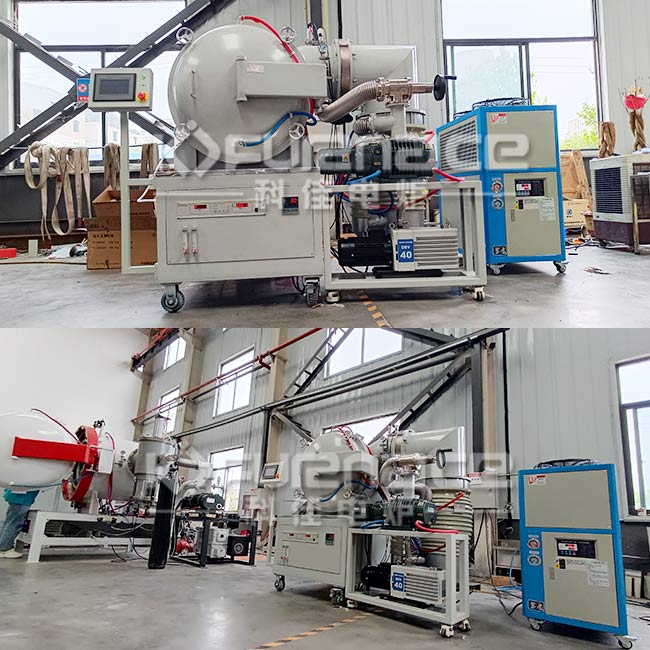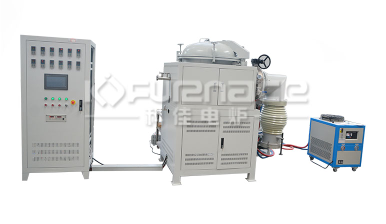Whether a muffle furnace can be evacuated depends on its specific design and purpose. Traditional muffle furnaces usually do not have the function of vacuuming, but some specially designed muffle furnaces (such as vacuum muffle furnaces) can achieve a vacuum environment. Let’s take a detailed look below!

The commonly used 1200 ℃ vacuum muffle furnace (click on the image to view product details)
1. Traditional muffle furnace: usually cannot be evacuated
Structural limitations
The traditional muffle furnace is composed of refractory materials such as ceramic fibers and high alumina bricks, and a metal shell. The furnace body has poor sealing and cannot withstand high vacuum environments. The original intention of its design is to perform high-temperature heating under the protection of air or inert gas, rather than creating vacuum conditions.
Functional positioning
Mainly used for routine experiments such as ashing, burning, and heat treatment, such as:
Determination of ash content in soil and ore;
Annealing and quenching of metal materials;
Sintering of ceramic materials (in air or inert gas).
potential risk
If forced vacuum is applied, it may result in:
Deformation or rupture of the furnace body (due to excessive internal and external pressure difference);
Loss of refractory materials and contamination of samples;
Heating elements (such as resistance wires) fail due to oxidation (if no protective measures are taken under vacuum).
2. Vacuum Muffle Furnace: Special Design for Vacuum Extraction
Structural characteristics
Sealed furnace body: adopts a metal (such as stainless steel) welded structure, equipped with vacuum flanges and sealing rings to ensure airtightness.
Vacuum system: Integrated mechanical pump or molecular pump, capable of pumping to high vacuum (such as below 10 ⁻ ³ Pa).
Heating method: Typically, graphite heaters or molybdenum heating wires are used to meet the high temperature requirements in a vacuum environment.
Functional advantages
Avoid oxidation: Process materials under vacuum or inert gas protection to prevent high-temperature oxidation (such as metal purification, semiconductor material preparation).
Degassing treatment: Removing adsorbed gases or volatile impurities from materials (such as degassing pretreatment in powder metallurgy).
Special reaction: Supports processes such as chemical vapor deposition (CVD) and sputtering coating under vacuum.
Typical application scenarios
Vacuum annealing and quenching of metal materials;
Vacuum sintering of ceramic materials;
Heat treatment of semiconductor materials (such as oxidation of silicon wafers);
Vacuum synthesis of nanomaterials (such as the preparation of carbon nanotubes and graphene).
3. How to determine if the muffle furnace can be evacuated?
Refer to the manual: Models clearly labeled with “vacuum function” or “maximum vacuum degree” support vacuum pumping.
Observation structure:
Vacuum muffle furnaces usually have observation windows, vacuum gauge pipe interfaces, and exhaust valves;
Traditional muffle furnaces only have inlet and outlet ports, without a vacuum system.
Consulting with the manufacturer: Confirm the furnace material, sealing method, and vacuum compatibility.
4. Alternative solution: If a vacuum environment is required but no vacuum muffle furnace is available
External vacuum system: Connect a vacuum pump to the exhaust port of a traditional muffle furnace, but please note:
Poor sealing and limited vacuum degree (usually only able to reach around 10 ² Pa);
There is a risk of damage to the furnace body, and long-term use is not recommended.
Use other equipment such as vacuum ovens, tube furnaces (equipped with vacuum systems), or glove boxes, depending on the experimental requirements.

Multi heating chamber vacuum muffle furnace (click on the picture to view product details)
Summarize
Traditional muffle furnace: cannot be evacuated, suitable for conventional heating under air or inert gas.
Vacuum muffle furnace: capable of vacuuming and suitable for special processes that require oxygen isolation.
Selection suggestion: Choose appropriate equipment based on experimental requirements (such as whether vacuum is needed, maximum temperature, sample type), and consult the manufacturer or technical parameters if necessary.Click to learn more Vacuum Furnaces! Or click on online customer service to learn more about product information!